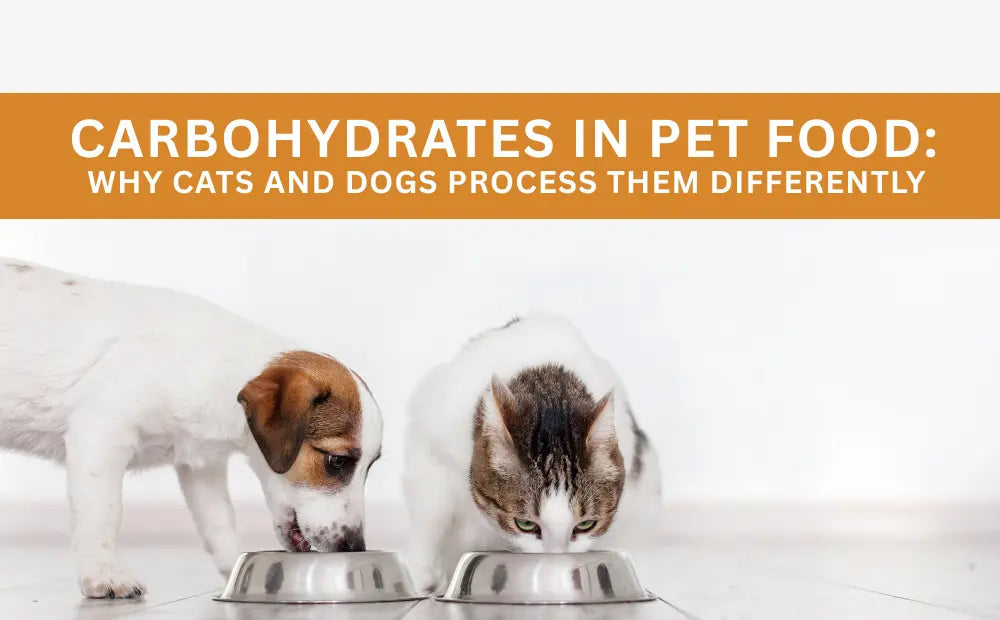
Carbohydrates in Pet Food: Why Cats and Dogs Process Them Differently
Carbohydrates in pet food often get dismissed as “fillers,” but the reality is more complex. For dogs, carbs can be a steady energy source and support digestive health—thanks to their ability to produce enzymes like salivary amylase. Cats, however, are obligate carnivores. They lack the same adaptations and thrive on diets where carbs are minimal and highly digestible. The key is choosing the right kinds, in the right amounts, tailored to your pet’s biology.
Carbs: More Than Just Fillers
Carbohydrates have been getting a bad reputation in pet nutrition circles. Critics often claim they’re unnecessary or harmful, but the truth is more nuanced.
Carbs provide energy, fiber, and beneficial phytonutrients. In moderation and from the right sources, they can support digestive health and overall well-being. The real issue isn’t whether carbs are in a pet’s diet—it’s what kind and how much.
Dogs: Adaptable Omnivorous Carnivores
Dogs have evolved alongside humans for thousands of years, adapting to digest a wider range of foods. One key difference? Dogs produce salivary amylase, an enzyme that starts breaking down carbohydrates right in the mouth.
This adaptation allows dogs to:
-
Digest starches efficiently
-
Convert plant-based beta-carotene into vitamin A
-
Use carbohydrates as a steady energy source
Quality matters, though—whole grains, sweet potatoes, and legumes are far more beneficial than refined starches or sugar-laden fillers.
Cats: Obligate Carnivores Without the Shortcut
Cats are a different story. As obligate carnivores, they evolved to rely almost exclusively on animal-based nutrients. They lack salivary amylase, meaning carb digestion doesn’t begin until food reaches the small intestine.
Cats also can’t:
-
Convert beta-carotene into vitamin A
-
Synthesize taurine or arginine in sufficient amounts
-
Produce arachidonic acid without animal fats
For cats, carbs should be minimal and sourced from highly digestible options—if they’re included at all. Diets high in unnecessary carbohydrates can displace the protein and fats cats need to thrive.
Choosing the Right Carbs
Whether you have a dog or a cat, focus on:
-
Whole food carbohydrate sources (sweet potato, oats, pumpkin)
-
Appropriate portion sizes (generally under 30% of calories for dogs, far less for cats)
-
Avoiding highly processed fillers like corn syrup solids or wheat middlings

The Bottom Line
Carbs aren’t inherently bad—they just need to match the biology of the animal eating them. Dogs can thrive with the right types and amounts, while cats require much less to stay healthy.
Knowing the difference ensures you’re feeding in a way that supports their unique nutritional needs.
